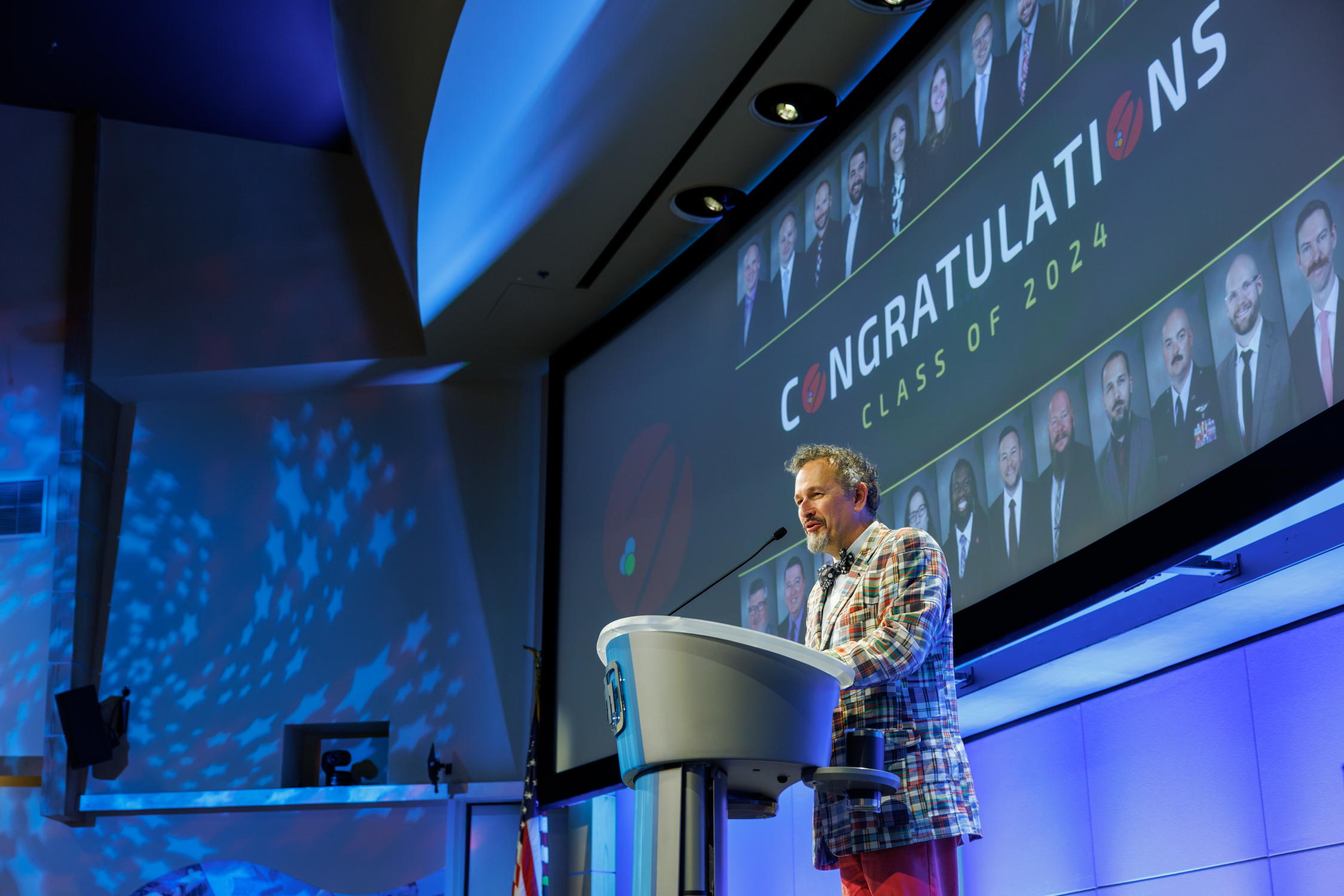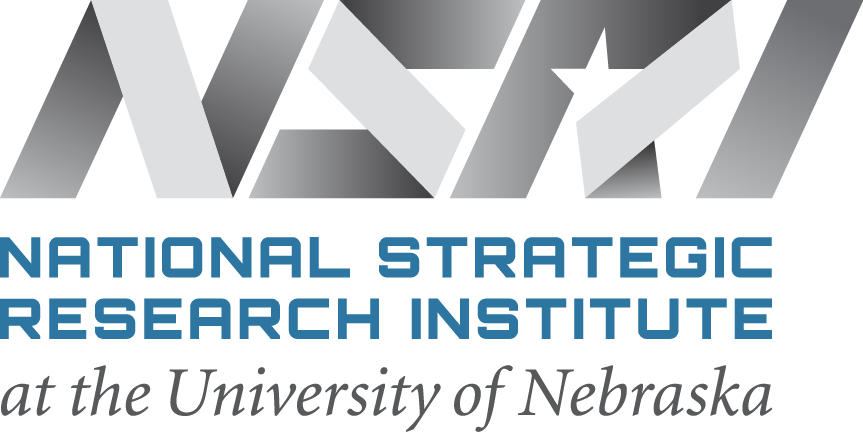
Dr. Christopher Yeaw, NSRI associate executive director for strategic deterrence and nuclear programs, recently provided the keynote address at Sandia National Laboratories (Sandia) Weapon Intern Program Class of 2024 Commencement.
Established 26 years ago, the annual program aims to accelerate knowledge transfer to the next generation of the weapons workforce. It is geared toward employees in the nuclear security enterprise with a Q clearance and one to 20 years of experience in nuclear weapons.
Dr. Yeaw focused his remarks to the 24 graduates on restoring balance to the U.S. nuclear force.
"When I say, ‘restoring balance to the force,” what do you think of?" Dr. Yeaw asked. "Probably Star Wars — a great movie. But from now on when you hear that phrase you should instead think of our Nation’s 10-year challenge in the nuclear security enterprise and the nuclear deterrence community more broadly.
"Our mission space of national nuclear security has come to lack balance in a number of ways, and those imbalances become your challenges as you move into positions of leadership in the nuclear security enterprise. It took us over a quarter century to get into this position, the so-called 'nuclear vacation,’ but we — you — need to restore these imbalances within a decade."
Dr. Yeaw went on to explain the imbalances he sees, including:
- Creation generating capability of the enterprise, sometimes abbreviated to “acquisition.” The ability to generate new necessary capabilities rapidly on the one hand, and the capability to successfully execute long term planning. For example, Pu pits or Tritium production verses credible theater forces.
- Achieving deterrent balance between two strategic rivals, not just one. By his estimates, Russia has 5,000 operationally-relevant nuclear weapons now and will have 8,000 by 2034; China has 1,000 now and will have 3,500 by 2034. This is compared to U.S. numbers of around 1,900 with no plan on the books to increase from that number by 2034.
- Strategic and theater forces. Entering into a central strategic exchange will most likely occur through non-nuclear and then theater nuclear conflict, he said. In order to deter this escalatory pathway, the U.S. must credibly deter all, which requires superior non-nuclear forces, sufficient strategic nuclear forces, and credible and formidable theater nuclear forces.
- Global nuclear basing and deployment patterns, especially Pacific and European coverage.
- Delivered yield — not everything should be 300 kT, he suggested. There is a large preponderance of the nuclear force that sits in very similar yield ranges and that will need to change throughout the coming years.
- Evolution of professional demographics. The enterprise needs not just an aging workforce with young professionals finding their way, but a whole and balanced pipeline of various cadres of professionals tackling issues together.
- Advancements across the entirety of enterprise functionality — not just revamping older designs and integrations.
"Sandia’s Weapon Intern Program has admirably equipped you to take the reins of leadership within the national security enterprise," Dr. Yeaw said in conclusion. "You are better equipped than any class in years, because not only have you mastered the technical details required in this profession, but you also live at a time when you can clearly see the challenges around us and ahead of us. That hasn’t always been the case in the quarter century that lies behind us, but clarity has dramatically increased over the past several years.
"My charge to you as those in whom so much has been invested is this: as you move into leadership positions, with well-prepared foresight, keep in view this question: how am I helping to restore balance to the force?"
###
About the National Strategic Research Institute
Through the National Strategic Research Institute at the University of Nebraska leading scientists deliver innovative national security research, technology, product and strategy development, training and exercises, and subject matter expertise to the U.S. Department of Defense and other federal agencies. One of only 15 DOD-designated University Affiliated Research Centers in the country, NSRI is sponsored by U.S. Strategic Command and works to ensure the United States’ safety and preparedness against increasingly sophisticated threats. Read about our mission.

